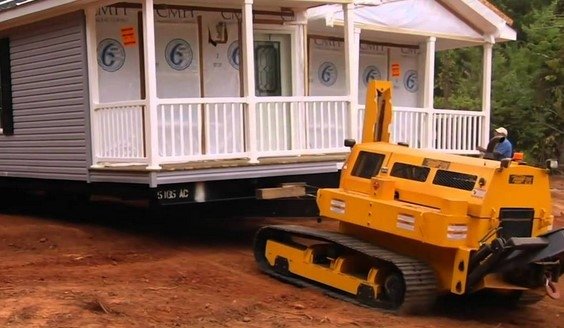In the context of a mobile home, a dirt pad refers to a compacted soil or gravel-based foundation or base. It is a straightforward and economical option for the foundation of mobile homes, manufactured homes, and modular homes.
There are some strict regulations about dirt pads for mobile homes, especially in several states and several cities. The regulations are created and made because it is considered crucial to pay attention to this factor if the house is built and set up.
First-Hand Knowledge: Having worked as a contractor for over 15 years, I have personally overseen numerous mobile home installations. Ensuring a solid platform as the basic foundation of the house is critical.
Without it, the construction is prone to damage and even collapse, and you certainly don’t want that happening to you. For instance, in one project in Louisiana, we encountered sandy soil that required minimal removal but thorough compaction to achieve the desired stability.

About the Mobile House Pad
Some areas call it mobile home concrete pads because it is made from concrete. In other areas, it is called the slab – or, to be exact, the slab on grade foundation. This foundation should be properly and correctly planned and poured into supporting the construction.

Dirt work is one of the major crucial aspects of this pad construction. Also known as the subgrade preparation or the sub-base, this dirt work will ensure that the slab will be evenly installed and not fail. To achieve the desired result, you must first use the topsoil before filling it with subgrade and then compact it.
Will you be able to make this dirt pad work on your own? Well, unless you are a professional contractor, unfortunately, you need to hire a professional service to help you with this work. You also need to check with the local legal regulation and formality.
Personal Experience: During my tenure, I have found that dirt work, also known as subgrade preparation or the sub-base, is a critical aspect of pad construction. This dirt work ensures the slab is evenly installed and does not fail.
To achieve the desired result, you must first use the topsoil before filling it with subgrade and then compact it. From personal experience, hiring a professional service to help with this work is essential. DIY attempts often lack precision and compliance with local legal regulations.
How to Manage the Mobile Home Pad
A dirt pad is a stable and level surface on which the mobile home can be placed. Here are how you plan and manage the dirt pad for mobile home construction.
- Check the local building and construction codes. The legal regulations generally have several requirements, especially for slab pour or preparation. Placement and setback are generally included in the process. In most cases, don’t be too surprised if there will be an inspection for the concrete pour and base preparation.
- Remove the topsoil and vegetation. Depending on the soil type and the height and thickness of the planned slab, there will be a determination of which subsoil should be removed. If it is sandy soil, you only need to remove a little. If it is rich in clay or loam, you need to remove several inches and then have gravel or sand mixture as the replacement.
- Begin the compacting process – it can use machines or hand tamps. This process will also fill in the low spots.
- Place stakes in each corner and several feet apart and then measure to ensure it is level.
- If fixes are needed, import the high or low spots fill.
Below is a summarized comparison of soil types and their preparation requirements:
| Soil Type | Preparation Required |
|---|---|
| Sandy Soil | Minimal removal, thorough compaction |
| Clay/Loam | Remove several inches, replace with gravel or sand mixture |
As mentioned above, a dirt pad serves as a foundation that is comparatively less permanent in nature when contrasted with crawlspaces or concrete slabs. As a result, its susceptibility to settling or shifting may increase with time.
Read also: Some of Above Ground Septic Tank
Consistent upkeep and intermittent re-leveling might be necessary to guarantee the mobile home’s stability when situated on a dirt pad. It is crucial to consult a professional and adhere to local building codes and regulations when contemplating using a dirt pad for a mobile home to ensure proper site preparation and installation.
Furthermore, the suitability of a particular foundation for a mobile home may be influenced by variables including the local climate, soil composition, and intended purpose of the dwelling.
It is crucial that you talk about the process, including the needed materials, to do this project. Choosing a reliable service is also crucial to ensure that dirt pads for mobile homework will run smoothly.


